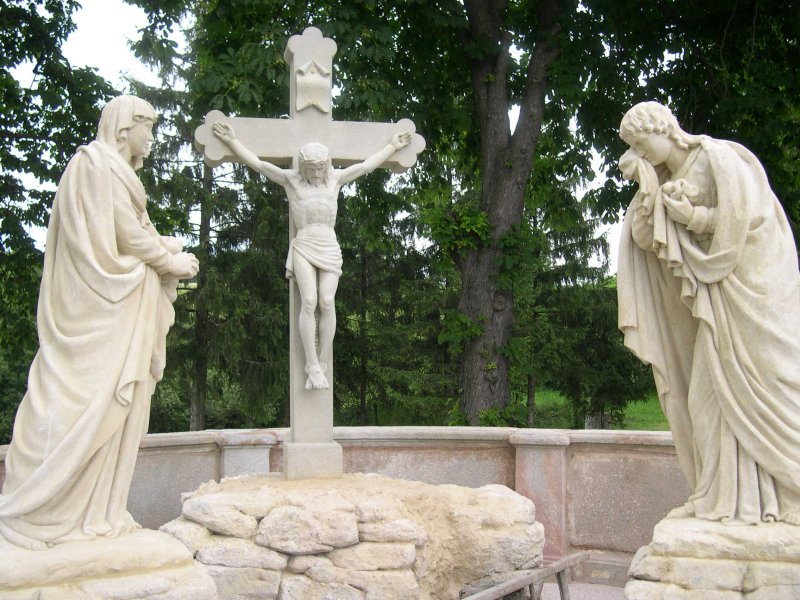St Anna Chapel, historic building of the belfry and carved tomb-stones in the cemetery
The Calvary
 The Calvary was built in 1825-26 in classicist style; the lower part is the St Anna Chapel.
The Calvary was built in 1825-26 in classicist style; the lower part is the St Anna Chapel.
It stands on top of a hill. The round building was erected in 1825 by the widow of Bonaventúra Szentiványi, Apollónia Szirmai and was consecrated in 1826 with a patronal festival (of St Jacob).
There is a pillar on each side of the door; above it there is a tympanon-like gable end with an arched top.
The Chapel
The inner area of the chapel is rounded; its arched ceiling holds the Calvary. Bent staircase leads to the top from both sides. A banister runs along the stairs and around on the top made from carved stones.
 There is a crucifix on the top, with the statues of Mary and John made by Dunaiszky Lőrinc, a famous sculptor of those days.
There is a crucifix on the top, with the statues of Mary and John made by Dunaiszky Lőrinc, a famous sculptor of those days.
The belfry was built in the 19th century. Close to it are the remains of walls that are considered to be remains of a palos monks' church and monastery.
The tombstones
There are several carved tombstones from the 19th century.
1.: Heart-shaped stone with round-ended cross. The engravings are from 1827, are in Hungarian but are quite illegible.
2.: Heart-shaped stone with round-ended cross, with engravings in Latin.
3.: Another stone with a larger cross; engravings are in Hungarian but quite illegible.
4.: Similar to the previous one with illegible engravings; used to be on the side of the road leading to the Calvary.
5.: Heart-shaped stone with round-ended cross. Tomb stone of Annae Blasko from 1825.
6.: Tomb-stone with small columns on each side, holding a tympanon-like gable end and a simple cross. Tombstone of János (John) Gyetmári from 1851.
7.: Carved tomb stone with a cross.
8.: Simple stone with a smaller cross. Was the tomb stone of Erzsébet Varga from 1844.
Several old tomb-stones - that tumbled over, were demolished, or were replaced with an intent of saving them and then some included in the above list - were re-erected alongside the road from the entrance to the Calvary vicar András Láng and sculptor András Laluja.













